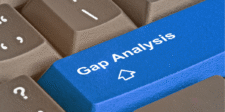Meeting hangover is the mental crash that hits after a long stretch of back-to-back meetings, leaving you foggy, unfocused, and mentally wiped. Studies say, continuous virtual meetings increase cognitive load and reduce decision-making accuracy1, making it harder to stay sharp, even when meetings seem productive.
It’s not about being tired, it’s about the toll of nonstop context switching, social performance, and the pressure to stay “on” all day. In this guide, you’ll learn what causes meeting hangover, how to recover without burning hours, and how to prevent it from wrecking your focus every afternoon.
What Meeting Hangover Actually Is (And Why It Wipes You Out)
Meeting hangover is the mental fog and cognitive exhaustion that lingers after a string of meetings, even if they were technically “productive.” It’s what happens when your brain gets pulled across multiple conversations, tools, decisions, and social dynamics without enough time to reset.
Your attention gets stretched thin, your processing slows down, and by the time you hit that afternoon window where deep work should happen, your mental fuel is gone. You’re not lazy or distracted, you’re running on an empty cognitive tank.
This kind of fatigue shows up in environments where context-switching is the norm and meetings dominate the calendar. Each meeting demands a different version of you: the strategist, the team player, the decision-maker, the note-taker.
That constant shifting burns through executive function, the part of your brain responsible for memory, focus, and impulse control.
And when there’s no space between calls to regroup, your brain never fully exits the last meeting before entering the next, so by 3 PM, you’re technically working, but nothing’s really getting done.
How to Recover From Meeting Hangover (Before It Tanks Your Whole Day)
You don’t need a week off or a wellness retreat to bounce back from a brutal meeting block. You just need the right reset, at the right time, so your brain can return to something resembling useful.
Step 1: Give Your Brain a Controlled Reset, Not a Blank Stare
Right after back-to-back meetings, your brain isn’t ready for deep work, it’s still untangling what just happened. Instead of jumping into a complex task and hoping for the best, give your brain a neutral buffer.
This could be 10–15 minutes of light admin, physical movement, or analog tasks like jotting handwritten notes. The key is to shift into a lower-intensity gear without crashing completely.
This kind of reset mimics how elite athletes cool down after performance, it’s not downtime, it’s intentional recovery. At Basecamp, team members use a post-meeting “log time” habit to reflect and mentally separate sessions.
It’s not productivity theater, it’s neurological maintenance that keeps your mind from feeling scrambled by noon.
Step 2: Move Your Body to Reboot Mental Clarity
Long meetings keep your mind racing and your body frozen, which creates the perfect conditions for cognitive fog. Even a short burst of physical movement, standing, stretching, walking, can trigger enough circulation to re-engage mental focus.
Physical shifts stimulate your nervous system and reduce the mental stagnation that builds during sedentary multitasking. It’s not exercise for fitness, it’s movement for mental reset.
Companies like Google encourage post-meeting movement to help employees exit “meeting headspace” and return to task-based thinking. The physical act of changing your state sends a signal that the previous context is over, helping you regain presence without burning through even more mental fuel.
Step 3: Protect the Next Hour, Don’t Dive Back In
Most people make the mistake of going from back-to-back meetings straight into a cognitively demanding task. That transition is where mental breakdowns start, especially if you’re already operating with reduced bandwidth.
The hour after a heavy meeting block should be used to regroup, do mid-effort work, and lower the cognitive bar without losing momentum. It’s a performance recovery window, not a productivity gap.
At Doist, creators of Todoist, they intentionally structure post-meeting time around admin-level work or documentation. This allows people to recover without fully stepping away or sacrificing progress, especially useful for async teams who operate across time zones but need sustained mental energy throughout the day.
Step 4: Get Visual, Not Verbal
After too much talking and listening, your verbal processing center is overworked. Trying to read, write, or ideate verbally right after meetings often leads to mental slowdown or scattered thinking.
Switching to visual processing, sketches, mind maps, whiteboards, engages a different part of the brain that’s still functional and underused. This gives your cognitive system a break while still helping you think clearly and take action.
Design and product teams at Figma often shift into post-call whiteboarding to continue progress without forcing traditional language-heavy tasks. This form of offloading preserves cognitive flow without exhausting already-drained channels, making it ideal for creative or problem-solving roles.
Step 5: Stop Holding All the Context Alone
If you’re the person everyone expects to remember every decision, document all outcomes, and follow up on everything after meetings, you’re set up to crash. Holding that much context without distributing the load creates decision fatigue and memory overload, two key ingredients in meeting hangover.
Context-hoarding turns every meeting into a mental juggling act, and by the end of the day, it feels like you’ve run a marathon with your brain.
Companies like GitLab avoid this by implementing shared documentation protocols, rotating note-takers, and requiring next steps to be owned by individuals, not assumed by one person. That simple redistribution of mental responsibility dramatically reduces post-meeting exhaustion, especially for team leads and project managers.
Step 6: Reduce Decision Fatigue Right After Meetings
Every meeting requires rapid decision-making, even if you’re not the one calling the shots. You decide when to speak up, how to respond, and what to remember, all while parsing others’ agendas and emotions.
When you string multiple meetings together, those micro-decisions compound, leading to a silent drain that catches up with you later. Trying to jump into more decisions afterward just deepens the crash.
To combat this, some companies pre-plan low-decision tasks immediately after meeting blocks. Others use default templates for follow-ups or automate post-meeting task assignment to remove unnecessary choices. Reducing decision load helps restore mental clarity faster and prevents post-meeting slumps from bleeding into the rest of your day.
Step 7: Change Your Physical Environment (Even Slightly)
The brain thrives on novelty and pattern shifts. Sitting in the same spot for five consecutive video calls dulls cognitive responsiveness, even if your calendar says you’ve been productive.
Changing your environment, even by a few degrees, can reset your attention span and disrupt mental fatigue patterns. It doesn’t require a total office overhaul, just enough to re-engage your sensory input.
Dropbox promotes “visual context breaks” where employees are encouraged to shift location or lighting after heavy collaboration sessions. That small environmental cue can be surprisingly effective at signaling your mind that it’s safe to reset and switch tasks without dragging residual fatigue into the next block of work.
Step 8: Use Sensory Anchors to Reset Your Mental State
Your nervous system associates specific physical triggers with mental states. Sensory anchors, like music, scents, or tactile objects, can help shift your brain out of meeting mode and into recovery faster.
These aren’t gimmicks; they’re rooted in state-dependent memory science and used in performance psychology to reinforce transitions. When used consistently, these cues build a clear on/off ramp for your brain.
Spotify’s product team often uses soundscapes and ambient playlists to reset between creative sessions and sync calls. It’s a lightweight, repeatable way to reclaim control over your mental state without relying on long breaks or full disengagement.
Step 9: Offload Verbal Exhaustion with Voice Notes
Right after meetings, your language center is fatigued, especially if you’ve spent hours speaking, presenting, or reacting in real time. Writing clear notes or summarizing takeaways can feel mentally expensive.
Voice notes offer a verbal “brain dump” without the pressure of polish, giving you space to capture thoughts while allowing cognitive cooldown. It’s fast, unfiltered, and easier on your system than structured writing.
Leaders at Automattic often use voice memos to process next steps after leadership calls without overwhelming their writing bandwidth. These raw recordings can be cleaned up later, but in the moment, they reduce friction and preserve clarity when it’s most fragile.
Step 10: Give Your Brain a Win (Micro-Momentum Trick)
After meetings, mental energy drops, but motivation can drop even faster. To avoid falling into a slump, stack small wins that are achievable without deep focus. Completing a few simple tasks gives your brain a hit of closure, helps shift attention forward, and restarts momentum without pressure. It’s a psychological reset disguised as productivity.
Teams at Trello call this “micro-momentum stacking,” using tiny tasks, like scheduling, filing, or sending a follow-up, as a bridge between meetings and meaningful work. It’s a simple tactic that rebuilds mental energy and prevents the afternoon from spiraling into unproductive fog.
Targeted Fixes for Common Meeting Hangover Symptoms
The after-effects of too many meetings aren’t just mental, they create distinct physical and neurological problems that disrupt how you work, think, and function.
These symptoms are easy to ignore but hard to shake. Instead of brushing them off, here’s how to spot them and recover fast with science-backed responses and real-life examples.
Tension Headaches Triggered by Zoom Fatigue
When your eyes stay locked on a screen for hours while you maintain a “camera-ready” expression, your face, neck, and scalp muscles stay clenched far longer than you realize.
This constant micro-tension leads to stress headaches, jaw discomfort, and even light nausea post-meeting. Add poor lighting and posture, and you’ve got a recipe for cranial overload.
Targeted Fix: Hydration, movement, and lowering screen brightness can interrupt this tension loop quickly.
Decision Paralysis Caused by Rapid Context Shifts
Jumping between meetings that cover strategy, operations, people management, and metrics in the span of two hours crushes your ability to prioritize. Your prefrontal cortex becomes so overloaded with unrelated inputs that it stops processing efficiently.
This often results in indecision, forgetfulness, or restarting the same task multiple times.
Targeted Fix: The fastest way out is to triage your task list into “easy, medium, heavy” and only tackle light work first.
Screen-Induced Nausea and Spatial Disconnection
Long periods of staring at fixed digital windows can cause a mismatch between visual perception and spatial awareness, similar to motion sickness. This creates low-grade nausea, dizziness, or a sense of disconnection from your surroundings.
It’s especially common in people using dual monitors or switching between Zoom, docs, and Slack rapidly.
Targeted Fix: Resetting your vestibular system with eye movement exercises and stepping away from screens for even 5 minutes helps restore orientation.
Executive Function Drop After Leading Back-to-Back Calls
When you’re the one driving multiple meetings in a row, your brain stays in high-stakes performance mode longer than it’s built for. This taxes your executive function, your brain’s ability to plan, filter distractions, and switch tasks smoothly.
By the end, you may feel fine physically but unable to start anything or make simple decisions.
Targeted Fix: Recovery here isn’t optional, it requires deliberate mental decompression before re-engagement.
Emotional Flatlining from Social Performance Burnout
In meetings where emotional labor is high, presenting, negotiating, or just trying to keep energy up, your brain burns glucose rapidly. Once that emotional effort ends, you crash, not because you’re physically tired, but because your regulation systems are spent.
You may feel emotionally numb, disconnected, or demotivated to engage with anything afterward.
Targeted Fix: Sensory resets like nature exposure, calming audio, or brief solitude help restore emotional availability.
Final Take: Don’t Let Meetings Hijack Your Focus (or Your Health)
Meeting hangover is not a personal failure, it’s a predictable response to a broken way of working. When recovery becomes routine and symptoms are addressed early, your clarity, creativity, and energy come back online faster.
This isn’t about avoiding meetings entirely, it’s about designing smarter rhythms that protect your brain. Your calendar should serve your work, not sabotage it.
Frequently Asked Questions
How long does a meeting hangover usually last?
A typical meeting hangover can last anywhere from 30 minutes to several hours, depending on the number of meetings and mental load involved. Without recovery actions, symptoms like brain fog or low focus may linger well into the next task block or day.
Is meeting hangover a sign of burnout?
Not necessarily, but it can be an early warning. Frequent meeting hangovers suggest chronic context switching and cognitive strain, which, left unchecked, can evolve into emotional exhaustion or full burnout. Addressing symptoms early helps prevent longer-term performance decline.
Can meeting hangover happen with virtual and in-person meetings?
Yes, both can trigger it, though virtual meetings often intensify symptoms due to screen fatigue and reduced physical movement. In-person meetings carry emotional cues and social pressure that can drain energy in a different but equally impactful way. The delivery method changes, not the impact.
Related:
- Executive Burnout: What It Is and How to Prevent It
- Decisiveness in Business: Key to Successful Leadership
- Empower Your Team: Delegate Responsibility the Right Way
Sources:
- https://www.nature.com/articles/s41598-024-60942-6 ↩︎

We empower people to succeed through information and essential services. Do you need help with something? Contact Us.
Want a heads-up once a week whenever a new article drops?







